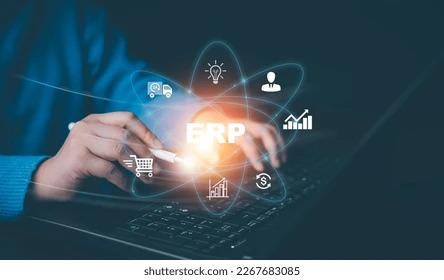Relocating data from legacy accounting systems to new software is a complex, multi-step process that requires cautious preparation, execution, and approval. This guide will frame the vital phases of data movement, give best practices, and feature normal difficulties and arrangements.
A business consultants can recognize new market open doors, further develop client experience, and enhance tasks, helping organizations develop and extend.
- Survey the Ongoing System
Prior to beginning the movement, it's pivotal to completely figure out the legacy framework. This incorporates its data structure, the sort of data stored, and how it is utilized inside your association. Legacy systems can change broadly as far as data configuration and association, so an exhaustive evaluation will assist you with recognizing expected difficulties and plan as needs be.
- Report Data and Processes
Reporting the data and cycles of the legacy framework is a basic step. This includes making an itemized guide of the data fields, connections, and work processes. It is fundamental to comprehend how data is arranged, the connections between various data focuses, and any customizations or adjustments that have been made over the long run. This documentation will act as a kind of perspective during the relocation cycle and assist with guaranteeing that no data is lost or distorted.
- Characterize Targets and Scope
Lay out clear targets for the relocation project. Figure out what you expect to accomplish with the new accounting software and how the relocation will uphold these objectives. Characterize the extent of the movement, including which data sets should be migrated, the time span for consummation, and the assets required. Setting clear targets and degree helps in overseeing assumptions and guarantees that the relocation is lined up with business needs.
- Pick the Right Relocation Tools and Methods
Choosing the suitable tools and techniques for data movement is pivotal. There are different tools accessible that can automate data extraction, change, and stacking (ETL) processes. Assess these tools in light of their similarity with both the legacy framework and the new software. Furthermore, look at whether as a staged methodology or a full-scale relocation is more reasonable for your association's necessities.
- Foster a Movement Plan
Make an itemized movement plan that frames the means in question, the course of events, and the obligations of each colleague. The arrangement ought to incorporate a data planning procedure, a data cleaning plan, and a testing methodology. Fostering a far reaching relocation plan helps in dealing with the intricacy of the cycle and limits the gamble of mistakes.
- Purge and Approve Data
Prior to relocating data, it is fundamental to purify and approve it. Data purifying includes recognizing and remedying errors, irregularities, and copies in the current data. Approval guarantees that the data is finished and precise before it is moved to the new framework. Clean data is critical for keeping up with the honesty and unwavering quality of the new accounting framework.
Attention: Famous accounting software list in pakistan incorporates QuickBooks, Xero, Wave, Count ERP, and Peachtree. These stages offer highlights like invoicing, cost following, charge the board, and monetary announcing custom fitted to nearby business needs.
- Map Data Fields
Data planning is the most common way of matching data fields from the legacy framework to those in the new software. This step includes characterizing how data from the old framework will be changed and brought into the new framework. Precise data planning is fundamental for guaranteeing that data is accurately adjusted and that the new framework capabilities as expected.
- Execute the Migration
With the arrangement complete, you can continue to execute the relocation. Contingent upon the picked technique, this could include utilizing automated tools to move data or physically contributing data into the new framework. Guarantee that the movement is acted in a controlled way, with close monitoring to resolve any issues that emerge.
- Monitor and Troubleshoot
During the relocation, intently monitor the interaction to distinguish and resolve any issues speedily. Investigating might include settling data move blunders, fixing data irregularities, or changing the relocation cycle in light of continuous criticism. Compelling monitoring and investigating are essential for a smooth relocation and limiting disturbances.
- Approve and Test Data
After the movement, it is critical to approve and test the data in the new framework. This includes checking that all data has been precisely moved and that it is working accurately inside the new software. Lead careful testing to guarantee that data respectability is kept up with and that the new framework meets all business necessities.
- Train Users
Give preparing to clients to acclimate them with the new accounting software. Preparing ought to cover how to explore the framework, access and decipher data, and use new elements. Legitimate preparation assists clients with adjusting to the new framework and guarantees a smooth change.
End
Moving data from legacy accounting systems to new software is an intricate cycle that requires cautious preparation, execution, and approval. By completely surveying the legacy framework, characterizing clear goals, and following an organized relocation plan, associations can effectively change to new software. Tending to normal difficulties and including clients in the process are likewise urgent for guaranteeing a fruitful relocation. With cautious administration and scrupulousness, data movement can be accomplished really, prompting further developed proficiency and usefulness in the new accounting framework.
